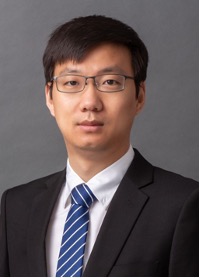Machine Learning Analysis of Tunnel
Magnetoresistance of Magnetic Tunnel Junctions with Disordered MgAl2O4
S. Ju1*, Y. Miura, K. Yamamoto, K.
Masuda, K. Uchida, J. Shiomi
1 Shanghai Jiao Tong
University, Shanghai, 201306, China
2 National Institute for
Materials Science, Tsukuba, 305-0047, Japan
3 The University of Tokyo,
Tokyo, 113-8656, Japan
ABSTRACT: Magnetic tunnel
junctions (MTJs) are important devices for spintronic applications, such as
magnetic random access memories and high-sensitivity magnetic sensors. Through
Bayesian optimization and LASSO technique combined with first-principles
calculations, we investigated the tunnel magnetoresistance (TMR) effect of
Fe/disordered−MgAl2O4(MAO)/Fe(001) MTJs to determine the
structures of disordered-MAO that give large TMR ratios. The optimal structure
with the largest TMR ratio was obtained by Bayesian optimization with 1728
structural candidates, where the convergence was reached within 300 structure
calculations. Characterization of the obtained structures suggested that the
in-plane distance between two Al atoms plays an important role in determining
the TMR ratio. The TMR ratio tended to be large when the ratio of the number of
Al, Mg, and vacancies in the [001] plane was 2:1:1, indicating that the control
of Al atomic positions is essential to enhancing the TMR ratio in MTJs with
disordered MAO. The present work reveals the effectiveness and advantage of materials
informatics in designing high-performance spintronic devices based on MTJs.

Keywords: Machine learning; Magnetic tunnel junctions; High tunnel magnetoresistance ratio; Structure optimization

Shenghong Ju received his B.S. degree from Nanjing University of Aeronautics and Astronautics in 2008, and he obtained his Ph.D. degree in Engineering Thermophysics from Tsinghua University in 2014. He conducted postdoctoral research in Ecole Centrale Paris and the University of Tokyo from 2014 to 2019. He is currently an associate professor in Shanghai Jiao Tong University. His research mainly focuses on the materials informatics, computational materials and nanoscale heat transfer.